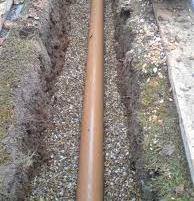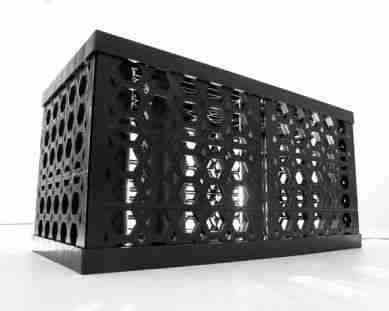Soakaway Crates - What They are & When Not to Use Them | WTE
Soakaway crates must not be used for sewage effluent. The Environment Agency has told us that only methods, materials and systems described in the Building Regulations Section H2 and in the BS 6297 2007, British Standard for Foul Water Drainage Fields are allowed.
Soakaway crates, tunnels, etc. are only to be used for Rainwater run-off and they are not allowed to be used for septic tank or sewage treatment plant soakaway drainage systems.
They are also banned under the Environment Agency General Binding Rules for Sewage Discharges to Ground.
Why Soakaway Crates, Boxes, Concrete Rings and Tunnels are not allowed for sewage effluent
All sewage effluent, even from a sewage treatment plant, contains harmful bacteria and viruses which we must keep out of public drinking water boreholes. These nasty bacteria and viruses are destroyed in a soakaway that is built using drainage stone, but not in soakaways built using soakaway crates and tunnels.
A foul water soakaway has 2 functions:
- To soak the volume of liquid away into the soil
- To allow the natural 'friendly' bacteria which grow on the surface of the drainage stone in the soakaway trench, to digest the contaminants, nasty bacteria and viruses, E.Coli, etc. before they enter the groundwater and pollute Water Authority boreholes that supply public drinking water
These friendly bacteria are aerobic - they breathe oxygen - and are only found in the aerobic zone of the soil. This is in the top metre of the ground, as oxygen cannot penetrate any deeper than this.
In order for the nasty bacteria in the sewage to be digested by the friendly bacteria that grows on the drainage stone, there must be the maximum amount of contact between them and the maximum amount of surface area for the friendly bacteria to grow on. Soakaway crates and tunnels provide NO surface area for the growth of friendly bacteria. They only provide a void which stores the sewage water before it drains away into the soil at a depth that is below the aerobic zone of the soil. No secondary treatment by friendly bacteria is possible and E. Coli, etc. pass directly into groundwater, contaminating drinking water supplies.
Soakaway crates and tunnels are only allowed to soak away roof and surface water which is not contaminated and, therefore, requires no further treatment.
BEWARE OF THE 'COWBOY' TRADERS WHO TRY TO SELL THESE SOAKAWAY CRATES FOR FOUL DRAINAGE - Call Trading Standards


